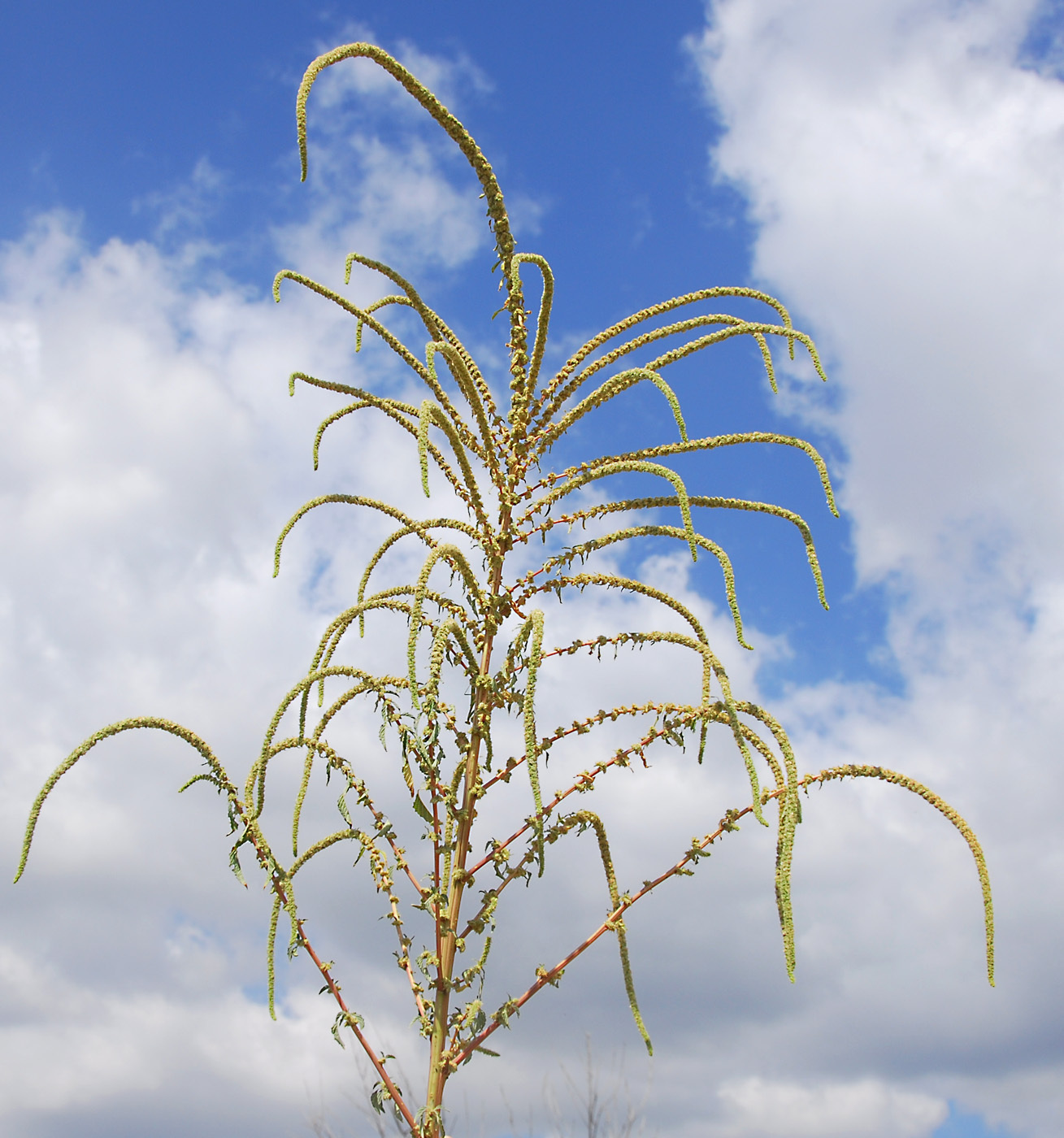Amaranthus palmeri

Distribution
Altitudinal range
150–400 mB
B. Hadjikyriakou, G., Makris, C., Christofides, Y. & Alziar, G. 2004: Additions to the flora of Cyprus. – J. Bot. Soc. Bot. France 27: 31-46
Description
Dioecious annual, glabrous or almost so, pale green, up to 1.5 m. Stems erect, simple or short-branched, sulcate-angular. Leaves up to 7 cm, petiolate, ovate or rhombic to lanceolate, more or less obtuse, usually mucronate, prominently nerved. Inflorescences usually unisexual, sometimes polygamous, terminal, spike-like, more or less erect, much elongated, continuous or interrupted below, often with many or few smaller, axiilary spikes at base. Bracteoles up to 7 mm, one and a half to 3 times as long as tepals, more or less spreading, lanceolate-subulate, spiny-tipped, rigid in pistillate flowers, shorter and weaker in staminate ones. Staminate flowers with 5 oblong acute-mucronulate about 2-3 mm long tepals, and 5 stamens about as long as tepals. Pistillate flowers with tepals as long as or Ionger than capsule, whitish-green, oblong or obovate to spatulate, mucronate or mucronulate or emarginate at apex. Fruit dehiscent, subglobular, 2-beaked, rugose at top. Seeds about 1.2 mm in diam., dark brown, shining.
Source: Zohary M. 1966: Flora Palaestina 1. - Jerusalem.
Source: Zohary M. 1966: Flora Palaestina 1. - Jerusalem.
